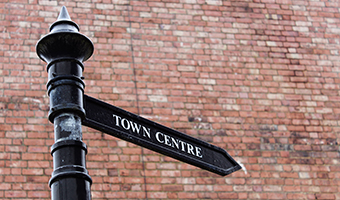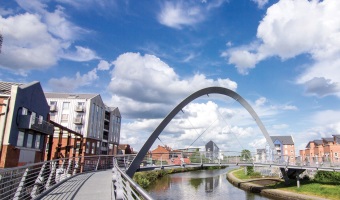Responding to changing consumer habits
A lot of attention has been given to the health of our town centres over the last decade. We know that shopping habits have changed, that consumers want an experience and that properties are taking on different uses. Faced with ailing high streets, the government, independent bodies and real estate operators have all been creating reports and looking for ways to revitalise our towns.
All these initiatives have little or no regard for the future, however. The indicators used by the National Planning Policy Framework (NPPF) to measure the health of a town centre are out-of-date, scarily so. The world has moved on, becoming more connected, with much more emphasis on digitisation and the environment. If we are to create truly sustainable town centres, we need to start judging their health by the right parameters.
Although recently updated the Planning Policy Guidance (PPG) on town centres and retail still contains the same old static measures when assessing the health of town centres; diversity of uses, vacancy rates, rents, yields, pedestrian footfall, the balance between independent retailers versus multiples environmental quality of the town. Above these measures, there’s a huge gap in information. Throughout the entire document, there are no mentions of ‘digitisation’ or ‘technology’.
For example, there is no indication that providing free wifi in a town centre or high street could indicate a thriving centre, though there is clear evidence that this will attract consumers. More broadly, there are no mentions of digitisation to future-proof a centre for the emergence of 5G or the installation of electric car charging points to reduce carbon emissions. Why isn’t sustainability factored into the indicators of the health of a town?
Working towards a zero carbon future
A recent report from the Royal Town Planning Institute (RTPI), Planning for a Smart Energy Future, highlights the significant lack of attention that current national planning policy gives to smart energy. While strides are being taken to reduce carbon emissions, the current pace of change will not keep up with the ambitions outlined in the Clean Growth Strategy. The report argues that no development should be planned without successfully demonstrating it is fit to take its place in a zero-carbon future.
Today, the falling cost of technology and the frequent emergence of new tools mean that we can measure a huge number of factors with minimal disruption. Air quality sensors can be installed on existing traffic lights, sensors can detect the temperature of a retail unit versus the number of people inside, technology can monitor the movement of traffic and how it can be made more efficient. There’s an awful lot to be explored to bridge the gap between what indicators currently measure and what we need to measure to ensure a town centre is truly sustainable.
Significantly, the RTPI calls for joint endeavours between all those involved in development or regeneration. It’s true that the fragmented real estate ownership in town centres and high streets creates a barrier to implementing new technology. In contrast, a shopping centre with a single landlord can have far greater control over implementing technologies or measures. Furthermore, with Council’s increasingly becoming active players in the commercial market through the purchase of shopping centre and other assets, there is the potential to implement these initiatives further to the betterment and regeneration potential of town centres.
Are Business Improvement Districts the answer?
In a town centre, one solution could be the greater introduction of Business Improvement Districts (BIDs) to create a collective approach to bettering the area. For example, ten or 15 years ago Altrincham high street had a high vacancy rate. Now it has a BID (Altrincham Unlimited) that coordinates everything, from social media to attract visitors to measuring footfall. Even here, though, much more can be done.
There won’t be a real impetus to create a new definition of town centre health or to work together unless our national planning guidance asks for it. Guidelines have to recognise that we need to go beyond the age-old measures that have always been in place. All our towns need to move towards digitisation and away from fossil fuels. This must be led from the top and we are waiting for that to happen.
Get in touch

Email me direct
To:
REGISTER FOR UPDATES
Get the latest insight, event invites and commercial properties by email







